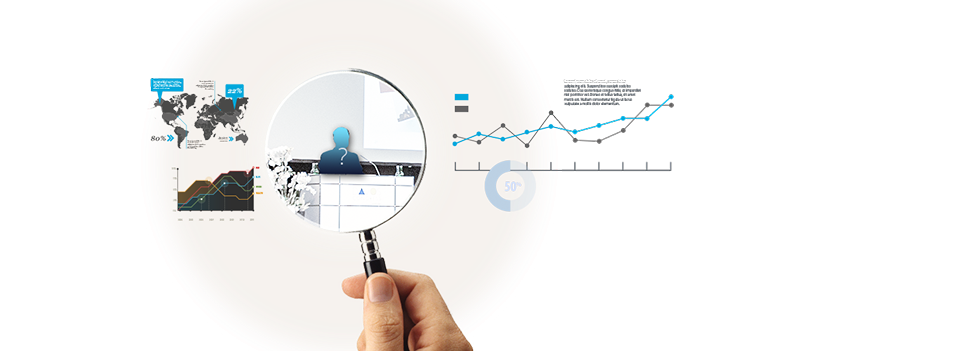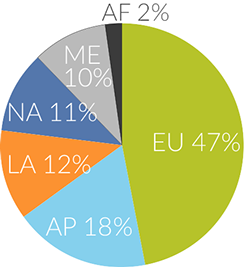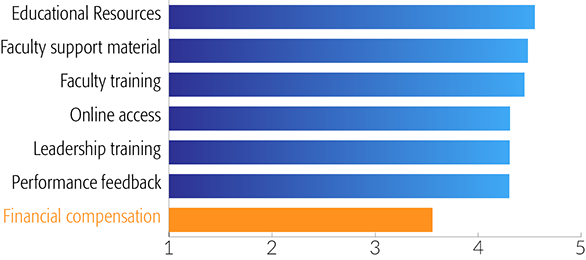

AOTrauma faculty members are mainly motivated by the wish to improve patient care. They would like to receive more performance feedback, and getting access to educational resources is their greatest incentive. These are only some of the results that the AOTrauma faculty survey brought to light. There is more, and these findings might change AOTrauma’s future faculty management and faculty offerings.
Why surgeons volunteer in medical education—AOTrauma faculty survey results
Why do surgeons choose to invest their free time in teaching for AOTrauma? This question marked the beginning of a study on the motivation, satisfaction, and commitment of AOTrauma faculty members. To answer this question, an elaborate online survey was sent to all 4,661 registered AOTrauma faculty members last May. The survey’s questions were based on prestudy interviews conducted at the Davos Courses 2013, as well as extensive literature research into volunteer motivation1,2.
With 740 valid replies, the survey yielded a satisfactory response rate of 16%. Comparing the survey participants with the currently active faculty member population suggests good representation (Figure 1). The survey responses were thoroughly analyzed and last autumn, the results were presented to the AOTrauma Education Commission (AOTEC) and the Community Development Commission (AOTCDC). These results are now being made available to you—the faculty members of AOTrauma—who made this survey possible. Here is what we found:
Fig 1. Demographics of participants



Patient care and giving back
Researchers have identified a total of ten general volunteering motives 1,2 of which the following eight were deemed applicable to the situation of volunteering faculty members:
Volunteering motives:
Motive
Values
Reciprocity
Understanding
Esteem
Recognition
Career Development
Social Interaction
Social
Definition
Wish to improve patient care
Wish to give something back to the medical education society
Wish to learn or train surgical or educational skills
Wish to increase positive feelings of self-worth and self-esteem
Wish to be recognized for own skills and contribution
Wish to gain career related experiences and connections
Wish to build social networks and interact with peers
Wish to conform to the influence of mentors and peers
In the online survey each motive was represented by two or three answer options.
In Figure 2 you can see that most faculty members indicate "values", "reciprocity", and "understanding" as the most important motives for volunteering. If you click on the first three motives you will also see the mean values for the corresponding survey items. This shows, for instance, that out of all the given items "helping participants become better doctors" and "improving patient care" received the highest importance scores.
Fig 2. Most important motives (click on highlighted bars for detailed item score)

Values

Reciprocity

Understanding

x
They want to teach more …
In regard to their faculty service, the survey participants generally report high satisfaction levels, as portrayed in Figure 3. The majority of faculty members are especially satisfied with the social aspects of being AOTrauma faculty, next to the "learning opportunities" provided and the "progress seen in participants". On the other side of the spectrum, the faculty members rate "financial compensation", "performance feedback", "teaching-", "training-", and "leadership-opportunities" as the least satisfactory aspects of their volunteer service (Figure 3).
Fig 3. Satisfaction in general

Least satisfactory aspects

…but do they want more money?
Regarding incentives, survey results indicate that "faculty training", and "educational" and "faculty resources" are the most important perks for a majority of faculty members. Least appreciated are "financial compensation" and "tokens of recognition".
When comparing the incentives listed in Figure 4 with the aspects of satisfaction in Figure 5, it stands out that some items receiving low satisfaction scores are, at the same time, highly attractive incentives., These include "performance feedback", "training", and "leadership opportunities"; clearly indicating that these aspects of the faculty service should be improved.
"Financial compensation", however, ranks last on both Figures. Even though "financial compensation" receives the lowest satisfaction score, this does not necessarily make it a problematic issue. The majority of faculty members does not perceive their remuneration as an important benefit to their service. This is probably due to the awareness that financial compensation cannot be a valid remuneration for a volunteering service.
Fig 4. Most preferred incentives

What Europe likes and Asia Pacific doesn't
The results regarding motives, satisfaction, and incentives were also analyzed separately for each AOTrauma region. While the same general trends can be seen in all regions, this analysis also shows some important deviations from the average. (Please click on the region you are most interested in in Figure 6.)
Fig 5. Regional differences

North America
Most motivated by Values, Reciprocity
Least motivated by Recognition, Career Development
Most satisfied with Friendships, Rewardable-ness
Least satisfied with Financial compensation, Teaching opportunity
Most appreciated incentives Educational resources, Faculty support material
Least appreciated incentives Financial compensation, Appreciation letters
Latin America
Most motivated by Values, Reciprocity
Least motivated by Recognition, Career Development
Most satisfied with Friendships, Rewardable-ness
Least satisfied with Financial compensation, Teaching opportunity
Most appreciated incentives Educational resources, Faculty support material
Least appreciated incentives Financial compensation, Appreciation letters
Middle East
Most motivated by Values, Reciprocity
Least motivated by Recognition, Career Development
Most satisfied with Friendships, Rewardable-ness
Least satisfied with Financial compensation, Teaching opportunity
Most appreciated incentives Educational resources, Faculty support material
Least appreciated incentives Financial compensation, Appreciation letters
Europe
Most motivated by Values, Reciprocity
Least motivated by Recognition, Career Development
Most satisfied with Friendships, Rewardable-ness
Least satisfied with Financial compensation, Teaching opportunity
Most appreciated incentives Educational resources, Faculty support material
Least appreciated incentives Financial compensation, Appreciation letters
Asia Pacific
Most motivated by Reciprocity, Values
Least motivated by Social, Social interaction
Most satisfied with Friendships, Team-spirit
Least satisfied with Financial compensation, Teaching opportunity
Most appreciated incentives Educational resources, Faculty support material
Least appreciated incentives Financial compensation, Perception of independence
Click each region the view details
Today and tomorrow
The survey asked faculty members to rate the development of their motivation and commitment over time. Three-quarters say motivation has increased since their first faculty assignment. The same number of respondents indicated that they would like to increase their commitment as faculty members in the future (Figure 6).
Fig 6. Motivation change and future commitment

What will be done?
The results of the AOTrauma faculty survey are generally encouraging. The level of satisfaction, motivation, and commitment from most faculty members is outstanding. However, the survey results also indicate how AOTrauma's faculty offerings and contacts with faculty members could be improved. The following measures were discussed at the last AOTEC and AOTCDC meetings as possible implications of the findings:
• Strategically plan faculty trainings in the regions. Training just for the sake of training leads to frustration when faculty members do not receive teaching assignments.
• Communicate a clear and transparent faculty career pathway.
• Systematically gather information on the attendance and performance of faculty members in a database to provide regular and objective feedback.
• Where possible, align decisions regarding teaching assignments and the promotion of faculty members with performance feedback and improvement efforts.
At the Education Platform meeting on April 10–11, 2015, these implications and possible steps for implementation will be further discussed. FacultyFocus will keep you posted on the outcomes.
References:
- Esmond J, Dunlop P. Developing the Volunteer Motivation Inventory to Assess the Underlying Motivational Drives of Volunteers in Western Australia. Perth: CLAN WA; 2004.
- Clary G, Snyder M. Understanding and Assessing the Motivations of Volunteers: A Functional Approach. Journal of Personality and Social Psychology. 1998;74(6):1516–1530.
AOTrauma
www.aotrauma.com | education@aotrauma.org
Copyright © 2015 AO Foundation. All rights reserved.

